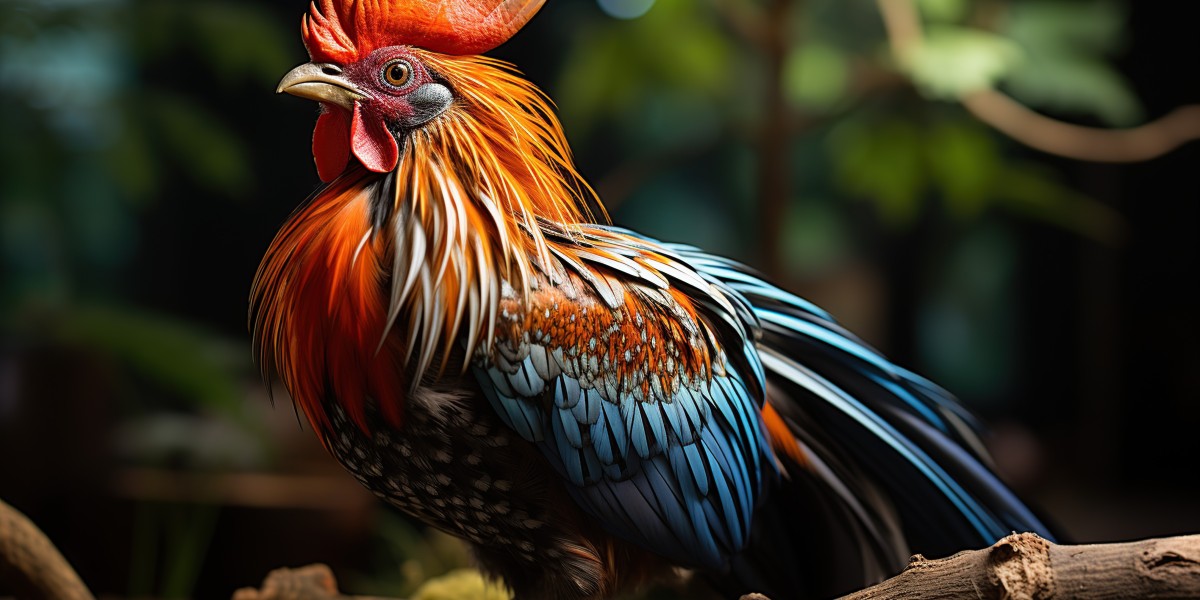"Gà chọi Việt Nam," or Vietnamese fighting chickens, are a prominent part of Vietnam's cultural heritage. Known for their resilience, unique physical features, and fighting spirit, these birds are celebrated not only as combatants but as symbols of strength and tradition. This article will provide a thorough overview of Vietnamese fighting chickens, covering their origins, popular breeds, traditional practices, legal considerations, and care requirements.
1. Historical and Cultural Significance
Vietnam has a long history of chicken fighting that spans centuries, originating as a practice that blends sport with cultural pride. These birds symbolize endurance, bravery, and the strong connection between humans and nature. Historically, Vietnamese fighting chickens were reared not only for their prowess in fighting but as part of festive events and gatherings. Chicken fighting has been part of family traditions and rural entertainment, reflecting community values and fostering bonds within neighborhoods.
While Vietnamese fighting chickens are renowned for their competitive abilities, they also play an important role in rituals and traditional events. Many families in Vietnam view the rearing of fighting chickens as a means of preserving ancestral practices, and these birds often hold sentimental value.
2. Popular Breeds of Vietnamese Fighting Chickens
The Vietnamese fighting chicken, commonly referred to as "gà chọi," encompasses several breeds. Two of the most popular are the gà chọi Bình Định and the gà nòi.
Gà chọi Bình Định: This breed originates from Bình Định Province and is particularly known for its large size, thick body, and strong bones, which make it formidable in combat. Gà chọi Bình Định chickens are prized for their endurance and strategic fighting style, making them highly sought after among enthusiasts.
Gà nòi: The gà nòi breed is another popular choice, characterized by a slender but muscular body, long legs, and a sharp, agile nature. They are known for their quick reflexes and strong instincts, excelling in battles that require agility and tactical maneuvers. Gà nòi chickens are particularly valued for their ability to strike swiftly and their adaptability in varying environments.
3. Distinctive Physical Traits
Vietnamese fighting chickens are distinct in appearance, typically sporting powerful legs, muscular bodies, and sturdy necks. They are equipped with strong, sharp claws and an impressive wingspan, both of which contribute to their effectiveness in fights. These chickens have robust skeletal structures, which not only supports their physical demands in the arena but also gives them a unique aesthetic that distinguishes them from regular domestic poultry.
Their feathers are often more sparse than other chicken breeds, which is believed to reduce the weight and improve agility during fights. The intense conditioning that Vietnamese fighting chickens undergo enhances their physical prowess, helping them develop resilient muscles and an impressive striking force.
4. Traditional Rearing and Training Practices
Raising Vietnamese fighting chickens involves extensive care and dedication. Farmers and enthusiasts invest time and effort into training the birds, preparing them physically and mentally for the challenges they will face. Training often includes specialized diets, exercise regimens, and grooming practices. Here are some key elements of traditional rearing:
Diet and Nutrition: Vietnamese fighting chickens are given a specialized diet that includes grains, herbs, and occasionally small amounts of meat or protein supplements to boost their strength. The focus is on providing balanced nutrition that promotes muscular development and enhances endurance.
Exercise Regimens: To ensure peak physical condition, these chickens undergo rigorous exercise. Common practices include running, wing-flapping exercises, and even resistance training to strengthen their muscles and improve their cardiovascular health.
Grooming and Health Checks: Owners pay close attention to the health and hygiene of their birds, routinely inspecting for any signs of injury or illness. Beak and claw maintenance is also a priority, as these are crucial for effective fighting.
5. Legal Considerations and Ethical Aspects
Chicken fighting is a contentious issue worldwide, with varying legal frameworks governing the practice. In Vietnam, it remains a culturally accepted practice but is subject to legal regulations. Local authorities may require permits, and the government has set rules to prevent any inhumane treatment of animals. Enthusiasts must adhere to these regulations, as violating them can result in fines or legal consequences.
It’s essential to differentiate between cultural practices and exploitative activities. Ethical treatment of animals, even in fighting sports, is a priority for many Vietnamese chicken breeders. Traditional training methods and welfare considerations aim to ensure that the birds are treated respectfully, with careful attention to their physical well-being.
6. Responsible Care and Maintenance
Owning and rearing Vietnamese fighting chickens involves commitment. Proper housing, diet, and healthcare are essential to ensure that the birds live healthy lives, whether they are active fighters or retired. Here are some best practices for responsible care:
Housing: Vietnamese fighting chickens require spacious, clean environments to thrive. Outdoor pens are often preferred, as they allow the birds to exercise freely while staying safe from potential predators. Adequate shelter from harsh weather conditions is also essential.
Healthcare: Regular veterinary check-ups and vaccinations are necessary to prevent diseases. Owners should monitor the chickens for any injuries, especially after fights, and treat wounds promptly to prevent infections.
Mental Stimulation: Like many animals, Vietnamese fighting chickens benefit from mental stimulation. Interaction with their owners and exposure to diverse environments can reduce stress and promote a more balanced temperament.
7. Conclusion
Vietnamese fighting chickens hold a revered place in Vietnam’s cultural landscape, embodying strength, resilience, and tradition. These birds are not just fighters but Gà chọi Việt Nam are valued for their heritage and symbolism. Raising and training Vietnamese fighting chickens requires skill, dedication, and a deep respect for the animal, reflecting a rich cultural legacy that has endured over centuries.
Although the practice of chicken fighting is controversial in some regions, it is an integral part of Vietnamese heritage. Those who wish to engage in the rearing of Vietnamese fighting chickens must understand the responsibilities involved, ensuring they uphold ethical practices and comply with legal regulations.



